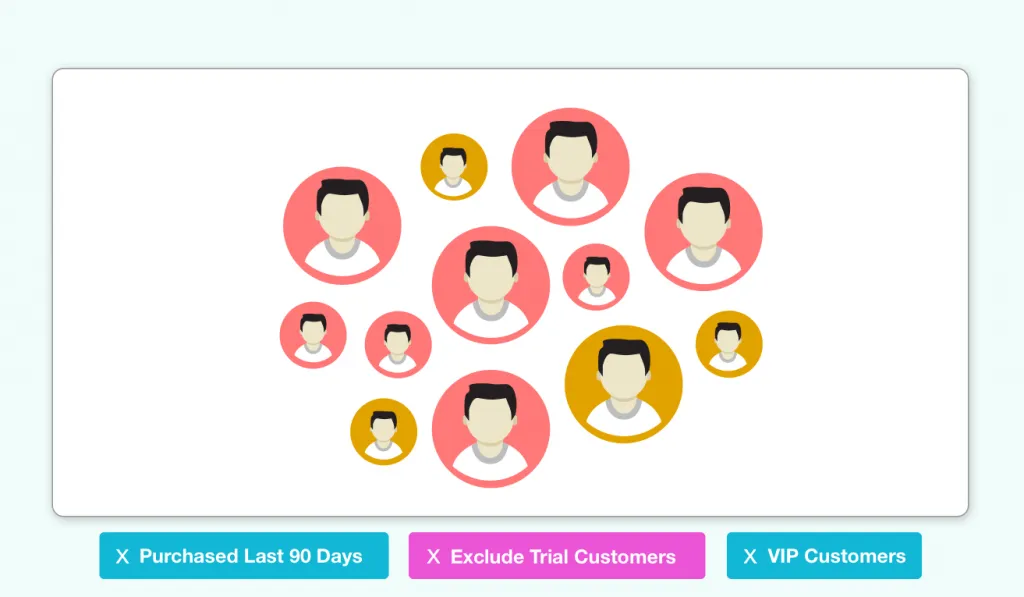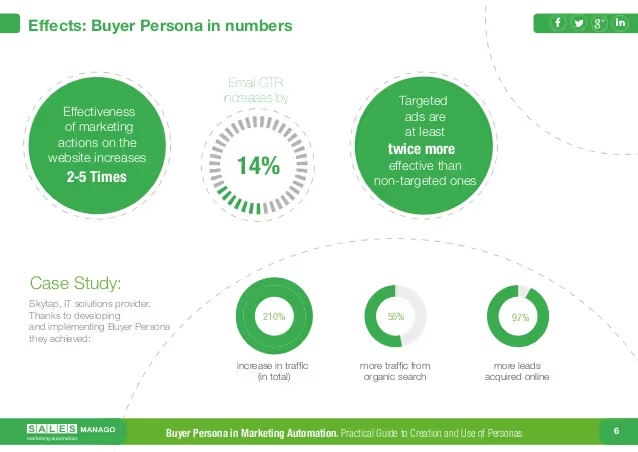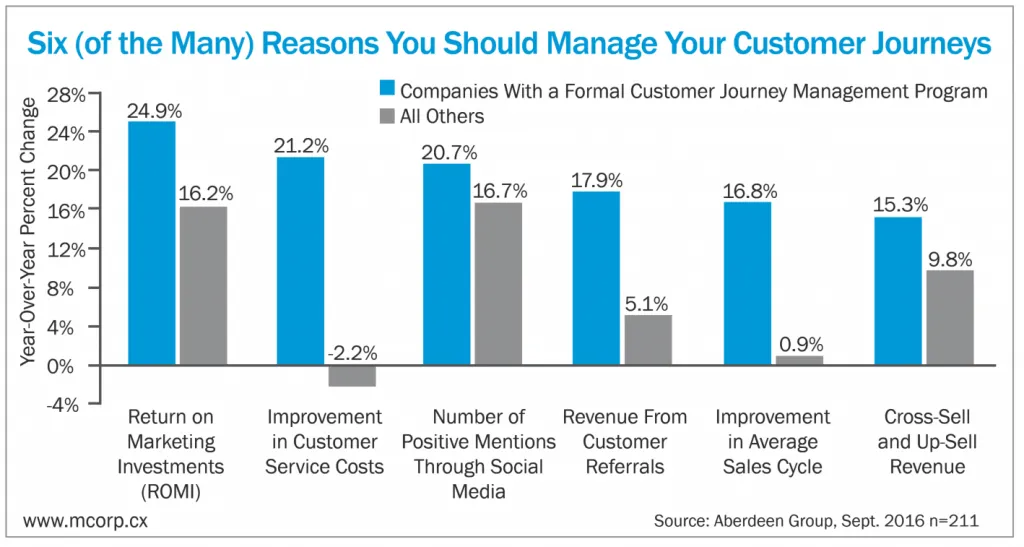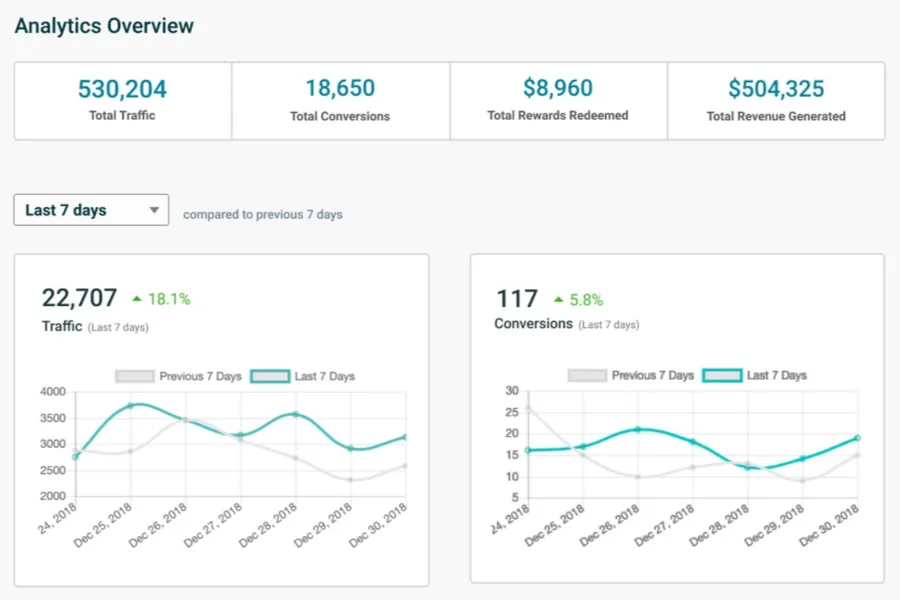4 Ways You Should be Using Your Loyalty Program Data
From the prompts to accept cookies on every website, to the Facebook ad for the item that you almost placed in your online shopping cart, it’s no secret that consumer data and behavior is consistently tracked online.
An understanding of buyer behavior is critical for any marketing campaign online, and your loyalty program is no exception. The ability to record member activity is one of the most important things you need to ensure success. Without it, there’s no way to tell if your program is driving the results you planned for.
But what should you actually be doing with this information?
The main reason that analytics exist for your loyalty program is to help you determine if it’s working. Metrics help you understand if customers are engaged enough to deliver a positive return on your investment, or if you need to change your rewards, offers, or terms and conditions.
That’s why we wrote a guide on How to Tell if your Loyalty Program is Working. By combining a few key metrics, you get a clear picture of how engaging, compelling, and financially sustainable your program really is.
But did you know that the data you extract from running your loyalty program can be used in other ways to drive business growth?
Fully leveraging your loyalty program’s data and information means being able to make better decisions about your customers, sales, marketing, product, and company as a whole.
4 things you should be doing with your loyalty program data
1 – Start segmenting your customers
Segmenting your customers means dividing them into groups based on shared characteristics. Segments can be based on demographics (gender, age, occupation, etc), geographical information, or behavioral data like spending habits and product usage.

Why is this important? More than half (63%) of consumers expect personalization as a standard when being sent special offers. This is a fair expectation given the amount of personal and purchase data that is handed over and tracked online. As a business, you’re better equipped to satisfy customers when you understand the characteristics of each sub-set.
Instead of wasting your marketing budget advertising the same pitch to every single customer, segmenting your users lets you deliver the most relevant offers and recommendations to drive the most engagement from each group.
Data from your loyalty program helps you identify which customer segments to prioritize.
Given that a businesses top 10% of customers spend almost 3x more per transaction than the lower 90% of customers, there’s no point in giving all customers the same offers when not all of them will deliver the same return.
For example, by segmenting your customers based on purchasing behavior, you can identify the top spenders that will be more receptive to up-sells, and should be eligible for more exclusive offers. You might even identify program members who could make great influencers for your brand, and formalize an agreement to leverage their personal network of connections.
On the other hand, using your loyalty program data to create a segment of at-risk customers (based on low purchase frequency or low engagement) lets you create more effective retention strategies and win-back offers.
When you tailor marketing strategies for each segment, customers feel personally valued and appreciated, because they’re not getting the same automated treatment as everyone else.
2 – Create buyer personas
Buyer personas are fictional, generalized representations of your ideal customers. They’re created from a combination of real data and assumptions backed by market research, and serve as a way to bring your customer segments to life with additional details and personality.
Why is this important? Having a clear picture of your ideal customer helps ensure that your sales, marketing, and product efforts are all aligned in an effort to attract them.
Creating a buyer persona involves describing your ideal customer as if they were a real person (or a real company). By turning to loyalty program data for customer characteristics, demographics, knowledge levels, buying patterns, and pain points, you’re better equipped to use the most effective language and incentives that would attract users like them.
Your ideal customer is generally one who gets a lot of use out of your product, makes repeat purchases, provides feedback, and shares the benefits of your brand with their friends and family.
When it comes to your loyalty programs, how well do you know your top referrers, or your most loyal customers?
Start by using your loyalty program’s data to answer a few questions about them:
- Where are they located?
- How often do they engage with your brand?
- What do they buy and for what use?
- Who are they referring, and how often?
- What incentivizes them to make a referral?
- What rewards are they redeeming?
This helps you better understand what motivates someone like them to take action, and through what channels they can best be reached.

For more guidance on creating buyer personas, check out this article.
3 – Map out the ideal customer journey
Creating a map of the customer journey means visualizing the customer experience, and outlining the most efficient path for a customer to take for developing into a loyal brand advocate.
Why is this important? Mapping out the customer journey lets you gain clarity on the experiences and frustrations of your customers as they progress with your brand over time. It provides insight on how you can remove roadblocks and hurdles to create a seamless experience and prevent churn.
It’s naive to think that the customer’s journey starts when they land on your website, and ends when they make a purchase. There are many more actions, (potential) pain points, and touchpoints that exist along the way – details that aren’t easily revealed by numbers alone.
Interactions with your loyalty and referral programs are extremely important touchpoints to include in the map of your customer journey. They mark moments when customers see enough value in your brand to deepen their engagement or share your value proposition with a friend.
To start mapping out the ideal customer journey, look at someone who has developed into a loyal brand advocate through involvement with your loyalty programs:
- What/when did they start buying?
- What action sparked their willingness to give a referral, and when?
- Who did they refer and when?
- How can you make their path easier for others to follow?
On the flip side, failure to stay engaged with your loyalty programs can indicate areas where users are getting stuck or losing interest. Better understand roadblocks by answering these questions about a customer who has dropped off:
- After how long did they stop buying?
- What lifecycle stage did they reach?
- Where could re-activation strategies be leveraged?
- What incentives or content could you use at each stage of the journey to help them proceed and improve the experience?
Not only can loyalty and referral data help you make a more complete customer journey, but doing so can actually improve your referral results. The Aberdeen Group found that companies who used a formal customer journey management program saw 3.5 times greater revenue from customer referrals, plus 56% more revenue from cross- and up-sells.

It makes sense that prioritizing the customer experience leads to happier customers who are more receptive to doing business with you.
Check out our guide for rewarding customer at every stage of the customer journey to improve conversions, or learn more about customer journey mapping here.
4 – Capitalize on predictable customer behavior
Use your customers’ referral and loyalty program activity to reveal time-based trends and repeat behavior to maximize conversions across all sales and marketing initiatives.
Why is this important? Knowing what time of the week, month, or year that your customers are most likely to engage with your brand online, and what action they’re most willing to complete, is one of your most valuable pieces of information. It fuels sales and marketing efforts as well as loyalty program creation.
For example, you might notice a tendency for customers to redeem rewards on Thursdays and Fridays. If users are willing to engage with your brand on these days, you can prepare your website, communications, and incentives accordingly to make the most of these spikes in traffic. This might include a flash sale on a Friday, or the launch of a new product on Thursday.
You could argue that a tool like Google Analytics can easily inform you about website traffic trends, but conversion and redemption data from your loyalty programs tells you when customers are ready to take action on your website as opposed to just browse.

In addition to knowing when customers are the most engaged, understanding repeat behavior of your loyalty program members lets you improve your retention efforts and motivate customers.
For example, say you run a loyalty points program and notice that the majority of members are redeeming points for one specific item. Given this item’s perceived value, you can confidently leverage it to win back customers or feature it prominently on your website.
Final Thoughts
There’s a lot you can learn from your loyalty program’s data to drive overall business growth.
And as you can see, everything we’ve described above is intertwined: By knowing more about your customer segments, you can create more detailed personas, better understand how they progress on a journey with your brand, and know when they are likely to take action.
By using your loyalty program data to create a clear picture of your customers, their journeys, habits and personalities, you’re in a more optimal position to be offering the right incentives to the right users for optimal conversions.